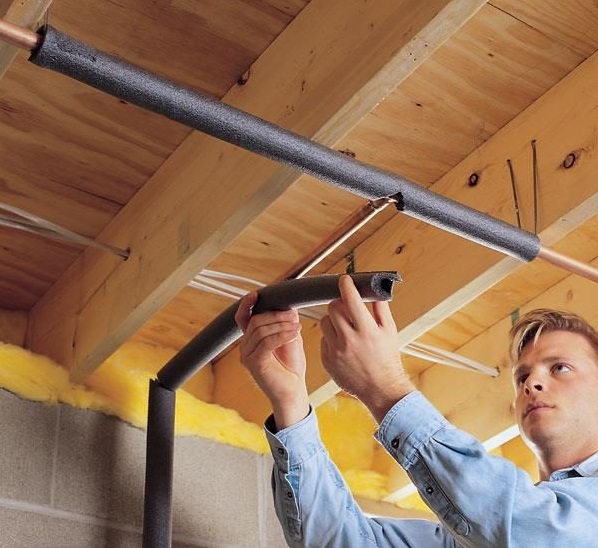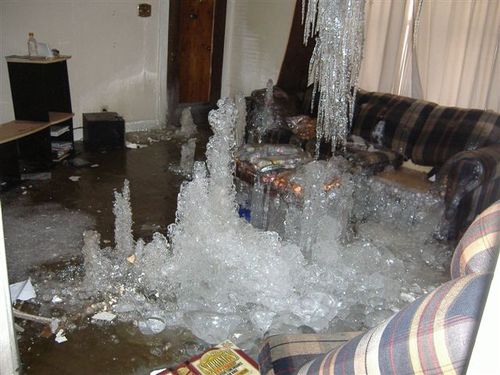Our plumbing is tucked nicely indoors, so why consider it something to winterize? Even though most plumbing is an interior system, preparing it for freezing temperatures outdoors can protect you from malfunctions and burst pipes. Taking the time to winterize your plumbing pipes and fixtures for winter’s chill can save you a huge hassle and lots of expense if you avoid expensive repairs and replacements.
Use our handy checklist to prepare your plumbing for the cold this winter in Maine:

Plumbing pipes running through unheated areas like your basement, attic, scrawl spaces, or garage are susceptible to freezing temperatures. Start by wrapping plumbing pipes with pipe insulation. Usually foam, semi-slit polyethylene pipe insulation is available at most home supply stores and easily fits over water pipes, secured with a wrap of electrical tape to keep in place. By itself, this insulation isn’t designed to withstand long-term cold temperatures so you might partner it with heat cable. Use heat cable along the pipes and then cover with pipe insulation.
Turn off your outdoor faucets at their shutoff valves. Open the faucet to allow excess water to run out, then open the bleeder cap on the shutoff valve to drain any water out of the pipe. If you don’t allow the bleeder cap to drain, the pipe can still freeze and crack. Leave the bleeder cap open with a bucket underneath to catch any drips. If the dripping continues, your shutoff valve needs to be replaced.
A freeze-proof outdoor spigot, also known as a frost-proof outdoor faucet, is a great solution is you don’t want to be bothered with an annual shut off process. It’s designed for installation on the side of a building exterior. These fixtures are basically a compression-style spigot with an extra-long barrel.
If we experience a particularly cold stretch of weather, pipes under sinks on exterior walls can be at risk for freezing even if they are in heated areas of the house. Open the doors to cabinets under kitchen or bathroom sinks to allow warm air to circulate near the pipes.
When it is really cold out, prepare your plumbing byt allowing a trickle of water to run through your faucets to avoid freezing pipes. The water pressure, even from a trickle, can prevent pipes from freezing and cracking. While you may see a minor bump in your water bill, it’s much better than footing the cost for emergency plumbing repairs or water damage to your home.
Before the snow gets deep, do a walking inspection around of your home, and look for visible cracks that need to be sealed. Cold air seeping through the cracks into your home can cause pipes to freeze. Use spray foam or caulking to fill the gaps and protect your pipes.

If your heating system goes out during the dead of winter, your pipes will suffer through the freezing temperatures until a repair can be made. Ensure your heating system is working properly before winter arrives to protect your pipes from bursting.
Protecting your pipes from winter’s harsh temperatures doesn’t require a lot of time or professional work. Follow these basic steps to keep your water flowing and pipes safe during the coldest months of the year.
Contact Us today for your annual plumbing inspection!